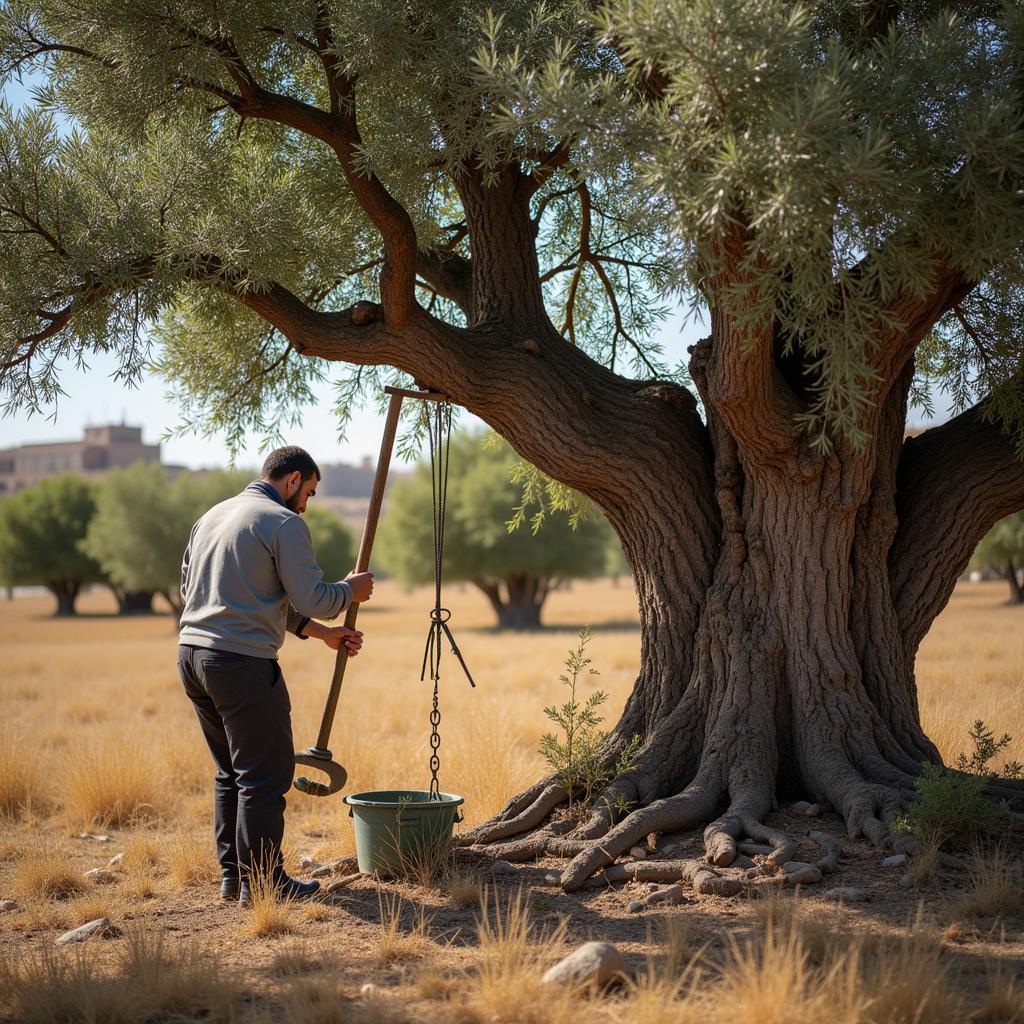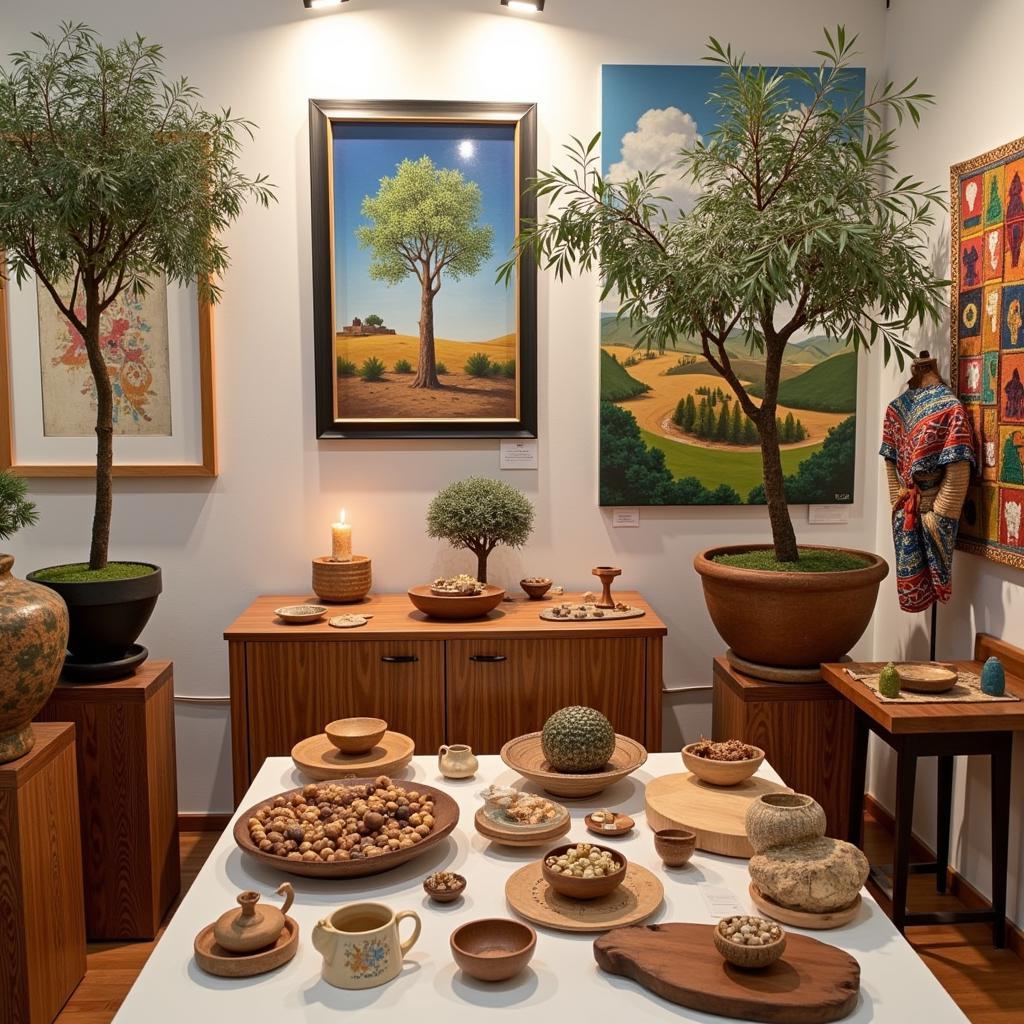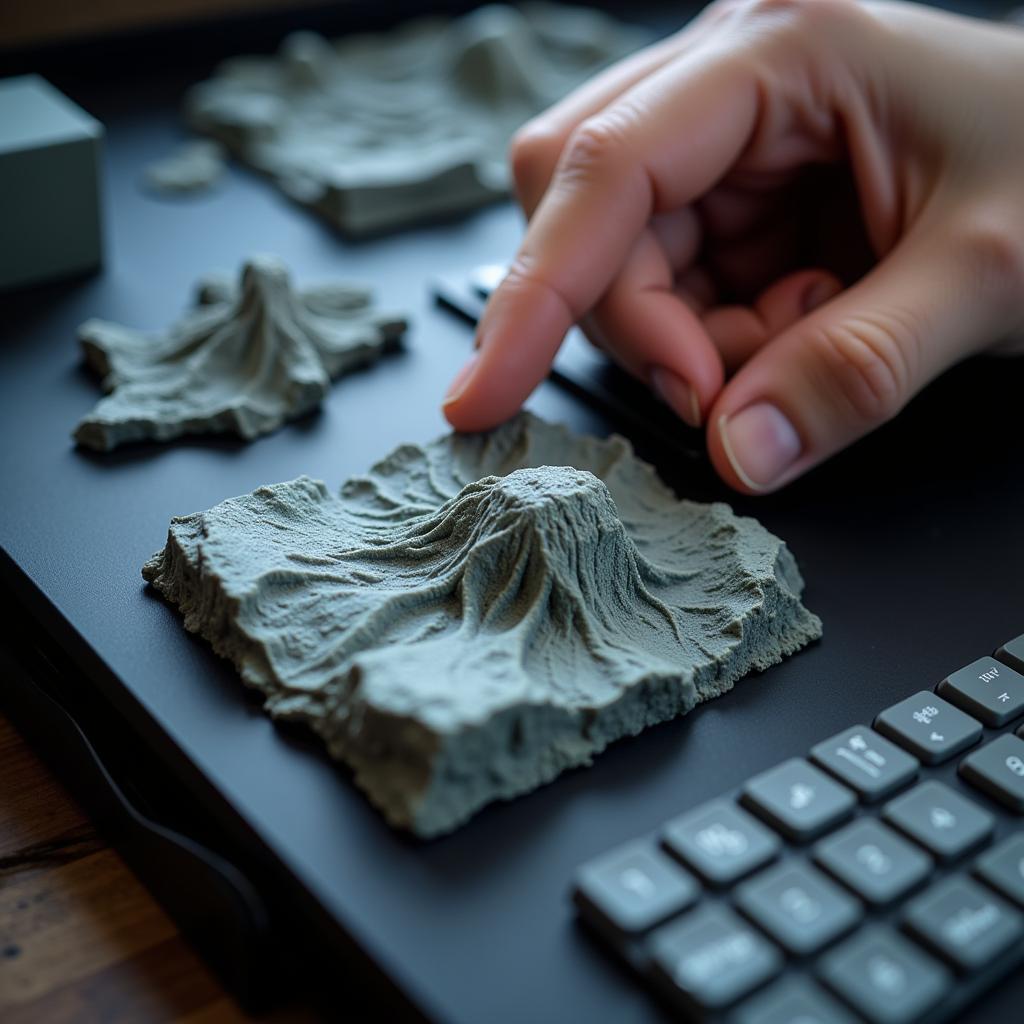Palestinian Olive Tree Art: A Timeless Symbol of Heritage and Resilience
Palestinian Olive Tree Art is more than just an aesthetic pursuit; it’s a profound expression of cultural heritage, resilience, and the enduring connection between the Palestinian people and their land. For centuries, the olive tree has held a place of honor in Palestinian society, its gnarled branches and silver-green leaves whispering tales of history, tradition, and unwavering hope.
 Palestinian olive wood carving depicting a traditional scene
Palestinian olive wood carving depicting a traditional scene
The Significance of the Olive Tree in Palestinian Culture
The olive tree, deeply rooted in the Palestinian landscape for millennia, is more than just a source of food and livelihood; it’s a powerful symbol of identity and resilience. Its presence is woven into the fabric of everyday life, its oil a staple in Palestinian cuisine, its branches used for fuel and shelter, and its fruit a source of income for generations of farmers. The olive tree’s longevity, often living for hundreds of years, has made it a silent witness to the ebb and flow of history, its sturdy trunk a testament to the Palestinian people’s enduring connection to their land.
 Palestinian farmer harvesting olives with traditional tools
Palestinian farmer harvesting olives with traditional tools
The Art of Olive Wood Carving: A Legacy Passed Down Through Generations
Palestinian olive wood carving is a testament to the resourcefulness and artistic spirit of the Palestinian people. For generations, skilled artisans have transformed the wood of the olive tree into exquisite pieces of art, each piece imbued with cultural significance and meaning. From intricate nativity scenes to ornate boxes and delicate jewelry, Palestinian olive wood carvings are prized for their beauty, durability, and the stories they tell. The craft is often passed down through families, ensuring the preservation of this rich artistic tradition.
Exploring the Different Forms of Palestinian Olive Tree Art
While olive wood carving remains a prominent form of Palestinian art, the olive tree inspires a diverse range of artistic expressions:
- Olive Oil Paintings: Palestinian artists capture the vibrant hues and textures of their homeland using paints infused with locally-sourced olive oil, creating works that are both visually stunning and richly symbolic.
- Olive Leaf Motifs: Delicate olive leaf patterns adorn traditional Palestinian embroidery, ceramics, and textiles, representing growth, peace, and prosperity.
- Olive Tree Photography: Photographers drawn to the timeless beauty of the Palestinian landscape capture the olive tree in all its glory, showcasing its gnarled branches, silvery leaves, and the interplay of light and shadow.
 Exhibition showcasing diverse Palestinian olive tree art forms
Exhibition showcasing diverse Palestinian olive tree art forms
Palestinian Olive Tree Art: A Bridge Between Cultures
Palestinian olive tree art serves as a powerful bridge between cultures, offering a glimpse into the rich heritage and traditions of the Palestinian people. By showcasing the beauty and craftsmanship of these artworks, artists and art enthusiasts alike contribute to the preservation of Palestinian cultural identity and foster a deeper understanding of the Palestinian narrative.
Conclusion
Palestinian olive tree art is a testament to the enduring bond between a people and their land. More than just beautiful objects, these artworks are vessels of history, culture, and resilience. By appreciating and supporting Palestinian olive tree art, we contribute to the preservation of a vibrant cultural heritage and celebrate the power of art to transcend borders and connect hearts.


